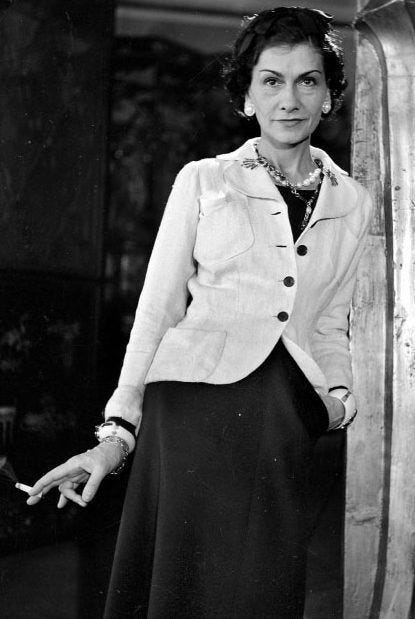I am sick of Instagram.
Everytime I open my feed, another influencer is twirling to the sound of music and showing off her perfectly planned outfit for the day on the streets of New York City. Are we facing a disastrous drought of originality in fashion?
There has been plenty of buzz surrounding the loss of originality due to social media trends, and the desire to fit in. However, I want to dive deeper into its detriments, lament about how this desire is ruining us and give you a reality check on how you are purchasing your outfits.
Everything, Everywhere, ctrl+c and ctrl+v All At Once
It is known that fashion is cyclical, and different eras have their own popular clothing trends. Now, more than ever, trends come and go at an alarming rate.
Micro-seasons, micro-influencers, micro-trends— It's getting micro- overwhelming!
I don’t think that fashion trends are evil at their core; in fact, they build communities, are a source of daily inspiration and allow us to have fun with what we put on.
What I believe should be rebuked about trends is not only the amount of waste that comes out of it, but the way it shackles us into thinking that we are behind, or uncool if we wear a piece of clothing that was popular a year ago. Trends should have never gotten out of hand, and it's scary that fashion brands and social media lure us into hyper-consumerism and into thinking that we should dress like the next Gabbriette.
Shirt from?
On the visual inspiration app, Pinterest or the accounts of your favourite fashion influencers, you might find hundreds of comments asking, “Shirt from?” or “Pants from?”
There is nothing wrong with being curious about where an outfit is from, but the problem here lies with wanting to own the exact same piece of clothing as others and losing our ability to improvise what we wear. What was meant for the sharing of inspiration, has ironically become a medium for plagiarism in fashion.
Let’s face it: If you are asking “shirt from?” under a video of an outfit check, where an influencer is wearing a basic white blouse, you could have saved yourself some time and found one in any H&M store—or better yet, your local thrift store.
Perhaps, you liked the frills on the blouse or its seersucker texture, but the next time you see someone wearing a blouse that you like on social media, skip the trouble of asking “blouse from?” Instead, open up your closet and find a similar outfit to wear. Find in your own clothing, details of the outfit that you saw from social media. Even if it's in a different colour or cut, it wouldn’t make your outfit any less cooler, because ultimately, you were inspired to dress like someone you found cool on the internet.
You Don’t Need To Fit Into a Certain Style To Be Stylish
Recently, I came across a TikTok video talking about aesthetics or the categorisation of what we choose to wear and purchase. The Tiktok by @asinderallastory discussed the ‘Sade girl’ categorisation, calling it a repackaged version of the ‘clean girl aesthetic’. She claims that naming an aesthetic ‘Sade girl’ has nothing to do with Sade, an artist that rose to fame in the 80s. For instance, someone who identifies as a Sade girl would wear a clean makeup style with a nude lip, whereas Sade the artist was more glamorous and would have worn red lipstick instead.
This shows how meaningless aesthetics are—they are made up concepts that we claim for ourselves to fit in. You do not have to be a categorised sheep to have style. If you think that Sade is a fashion icon, take her outfits or makeup solely as inspiration, for you can never wake up as Sade.
Did originality even exist in the first place?
Coco Chanel once said, “Only those with no memory insist on originality.” An authentic idea is hard to come by; even this essay of mine would never exist before the ideas of others and accomplished writers. To a large extent, fashion can never be original. It is often an amalgamation of novel ideas and the revival of past trends. Nevertheless, social media churns out inexorable cheat sheets, handed out to the world every second, leading to severe harm to the environment and altering the way we view fashion.
The best thing we can do to save ourselves in the age of social media is to imitate without needing to own the same outfits as others, and not become the victim of trends that have no substance to what it claims to be. Originality will not cease if we do so; we have it in us the ability to create and inspire, and I will end this piece by reminding you that whatever we take from social media should not be at the expense of our true selves.







